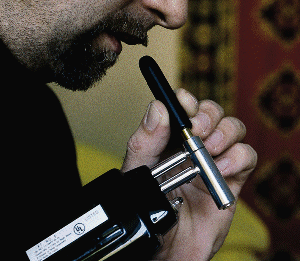max said:
As I've stated in post #4, these vapes are ancient as far as what's on the market today. I don't think the Eterra is available at all, and the Moxie may not be either. You'd have to email them to find out. Lightwell.net looks just the same, with the same info, as it did about 3 years ago. The Eterra design is much older than that. I'm pretty sure this company had the 1978 patent that Tom refers to as the inspiration for the PD.
BOB, THE INVENTOR ("CREATOR") OF THE ETERRA, NOT MICHAEL/LIGHTWELL, as mistakenly reported in prior still-unedited postings in this thread, seems to be getting back into vaporizer development. See
www.flashevap.com.
Besides describing his current projects, which look interesting, his commentary clears up many aspects of the history (or mythology) regarding the Eterra. For example, Lightwell eventually acquired Bob's stock of production Eterras and sold these seemingly for years, and he mentions "a fellow in Oregon, who had bought one of my units, copied them and sold them at half the price I had been asking." And of course, Bob was the inventor and assignee (owner) of the often-cited 1978 "Eterra Patent."
While most attention is paid to the Eterra, because it is obviously the parent of current log vaporizers, in terms of history or from technological, engineering, human factor, etc. perspectives, Bob's innovations were exemplified in the Flash Evaporator (see
http://www.flashevap.com/FE.htm). This involved the vapor tube (another lasting innovation for which Bob is probably the one who deserves credit) directly inserted into the resistor-heated brass heat exchanger. The Moxie looks to be much like the Flash Evaporator in terms of basic design.
The Eterra came next and added a tube on top of the heat exchanger running up to much the same type of ventilated metal anchoring/wood-mounting disk is still used by log vapes (another innovation, with several inches of tube length and the exposed top metal disk allowing enough heat loss/cooling to allow the disk to be anchored to the wood). The tube with a resistor inside served as the primary heater/heat exchanger, and depending on models (I only ever purchased cheaper seconds or prototypes), may have simply involved just the resistor within the pipe or additional metal mass (heat sink) added on the outside of the tube at the level of the resistor. The Pneuma came next, with this essentially a Flashevaporator/Eterra hybrid, with a massive straight-bore brass heat sink/exchanger (rounded at the top to allow vapor tubes to make a good seal when pressed down over the hole) replacing the short solid cylinder-shaped heat exchanger of the Flash Evaporator and the thin tube (and any heat sink) of the Eterra.
[Note, I live somewhat local (on the East Coast, not CA, where Eterra "creation" was attributed to in prior posts) to Bob and purchased each model he commercially developed over the years (guessing, 1994-2000). I saw production-run Eterras being made in his garage, so I can attest that Bob, not Micheal/Lightwell, was the inventor (creator), manufacturer and initial marketer of the Eterra, with as I recall, his company around that time then called Green Metals.]



